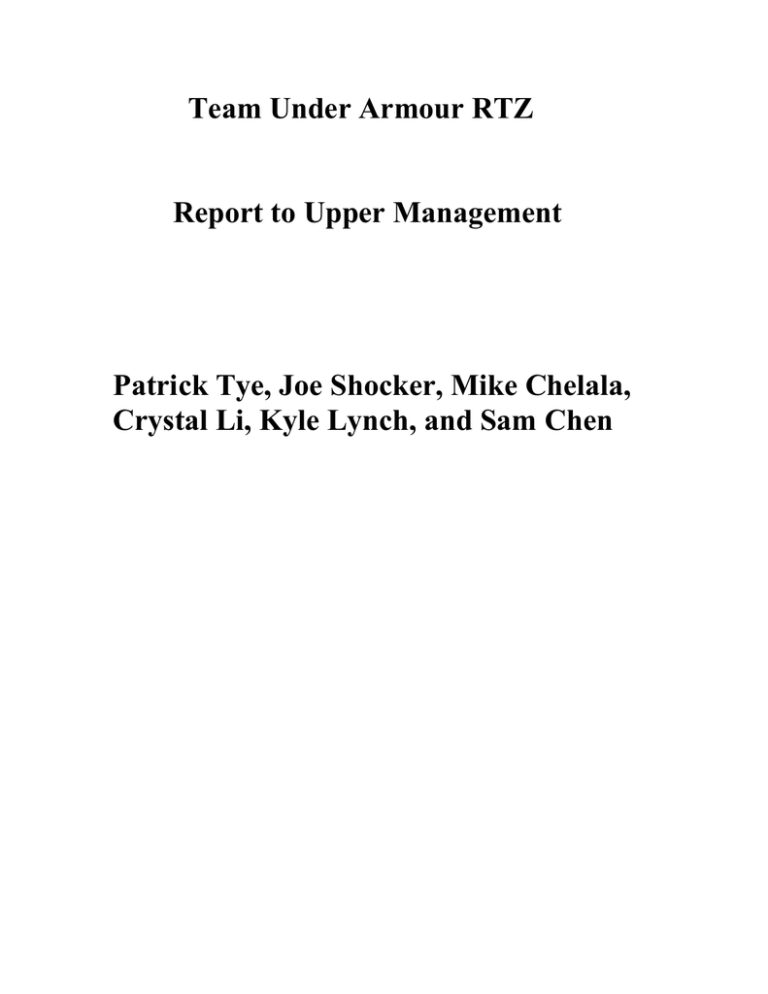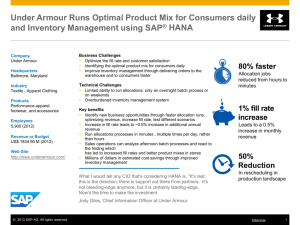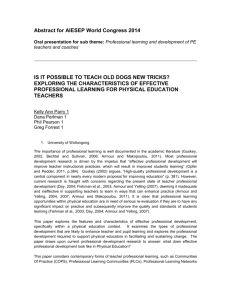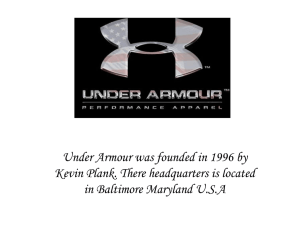Report to Upper Management
advertisement

Team Under Armour RTZ Report to Upper Management Patrick Tye, Joe Shocker, Mike Chelala, Crystal Li, Kyle Lynch, and Sam Chen Dear Mr. Plank, To ensure the longevity of Under Armour’s success our team has done a financial analysis of Under Armour’s statements from 2009-2012. We looked at its balance sheet, income statement, and statement of cash flows in addition to crucial financial ratios that speak to the health of the company. In order to measure Under Amour’s relative strengths and weaknesses we compared its financials to Columbia Sportswears’. Here are our findings: To begin with, the overall impression Under Armour leaves is quite impressive. Under Armour’s growth has been significant and steady. Its revenue exceeded 1.83 billion in 2012, which is a 153% growth rate from 2009, and YOY growth of 24.6% (from 2011 to 2012). In comparison to one of its competitors, Columbia Sportswear, it has experienced much more growth in sales. Columbia experienced a negative YOY growth from 2011- 2012 of 1.5 percent (-1.5). In short Under Armour has been experiencing impressive, but manageable growth. Examining financial ratios of the two companies is key to assessing their strengths and weaknesses. The first ratio that is important to look at is the current ratio; as of 2012 the company’s ration is 3.6. Superficially, the number looks good and signals shareholders that it is most likely capable of paying off short-term debt. Another piece of information that would help assess the state of the company is the average amount of times it takes for Under Armour to collect receivables. This information would be useful to better gauge the liquidity of the company. Under the assumption that Under Amour is liquid enough, you may be better off reinvesting some of the excess capital back into your business so that you can meet future revenue projections. Under Armour’s 2012 current ratio 3.6 compared to Columbia’s 4.5. Under Armour has much more cash than Columbia, but one advantage that Colombia has is that is has very few short-term liabilities. That may be another way Under Armour should spend their cash in the future to avoid too much accumulation of dept. Under Armour’s growth margin ratio has sat steady around 50% compared to Columbia’s 43% which means they are retaining more revenue from their sales than Columbia. The company has a low cost of goods sold compared to Colombia, but there is always room for creating larger margins for profit. It is important when keep costs low, that the quality of the product remains the same. Under Armour’s is efficiency is extremely competitive. It has an asset turnover ratio of 1.6 compared to Columbia’s 1.2 and quantitatively managed better than Columbia. Its return on assets is 11.1%, which is a steady 3.3% increase from 2009. As their company has expanded they are getting better returns from their assets. 2012’s 11.1% trumps Columbia’s 6.8%. Cash flow data that was significant in the reports were the operating cash flows and the capital expenditures. The volatility of cash flows coming in from operating activities would look better if the cash flows were more stable. The numbers over the four years range from 15 million to 200 million. Regardless of what revenues are, the amount of cash the company actually receives—versus sales on credit—are crucial to Under Armour’s vitality. Under Armour’s growth in sales have been tremendous, but the company may need to change the way they collect cash for sales on credit. Another number that may have been a bit low was capital expenditures. The company has plenty of capacity for growth and it may need manufacturing equipment or other infrastructure to produce more goods. Overall the report for Under Armour is extremely positive, especially compared to its competitor, Columbia. It’s YOY growth is just as impressive as its financial strength compared to its competitors. Areas that Under Armour should keep an eye on are its operating cash flows and possibly creating a bigger budget for capital expenditures. Also, to avoid the accumulation current and long-term liabilities, it should consider using cash instead of credit for some transactions.







